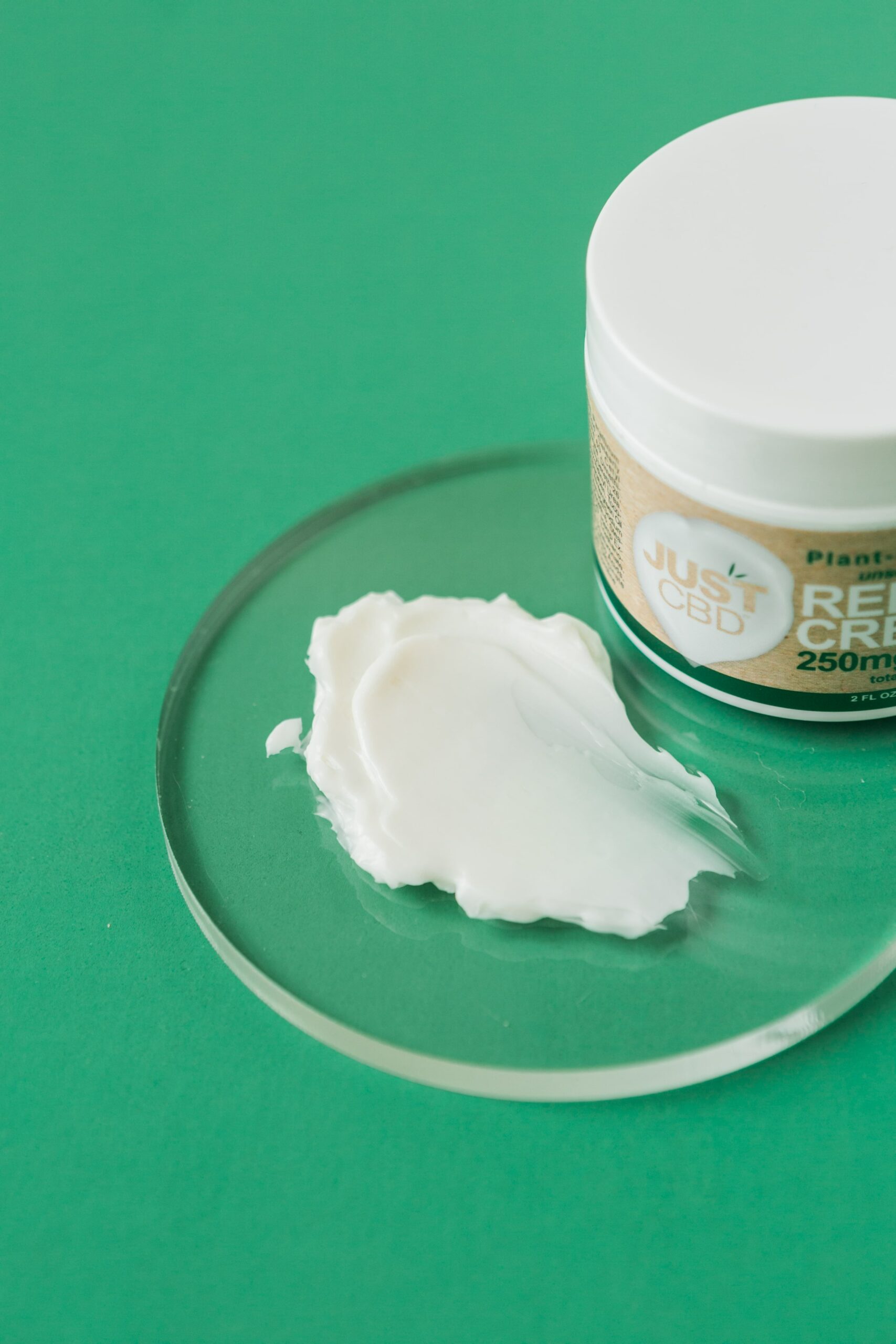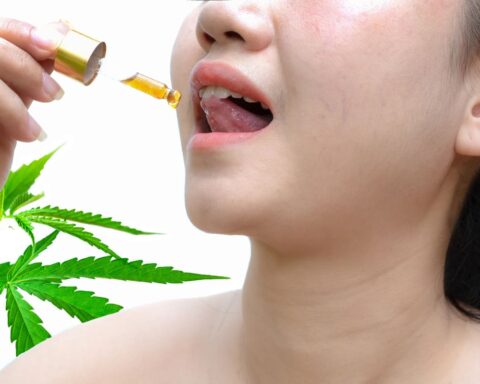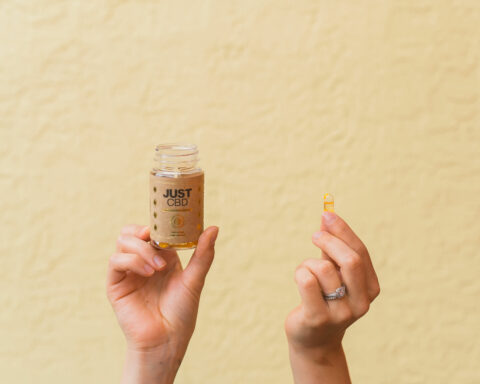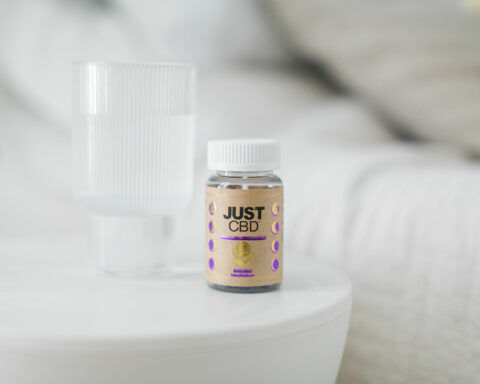What is CBD topical? How do CBD topical work, and how effective are they upon application? What is the mechanism of action of CBD topicals? What are some of the types of CBD topicals? This article explains CBD topicals and how best they work upon application.
CBD topicals are distinct from regular cannabis products in that they contain no THC. Their application to the skin results in the absorption of a mixture of CBD and other active compounds into the body, which is eventually eliminated through the skin.
CBD topicals, when used topically, can give the same benefits as other types of CBD, including reduction of inflammation and discomfort and the treatment of mental and physical symptoms, among other things. Salves, lotions, and oils containing cannabidiol are some of the most popular CBD topicals available on the market today. Most people choose to use CBD topicals topically on their skin, inhale the vapor, or swallow the capsules or tablets they contain.
What Is the Mechanism of Action of CBD Topicals?
In contrast to over-the-counter topical pain relief creams, CBD topical balm provides natural, non-habit forming, irritation-free pain treatment without masking the pain or inflammation. It is because of the endocannabinoid system in the body that CBD topicals perform so well. The endocannabinoid system (ECS) regulates various processes in the body, including sleep, memory, reproduction, fertility, immune response, and so on, which are regulated by the endocannabinoid system (ECS). This complex signaling system includes cannabinoid receptors (CB1 and CB2 Receptors), enzymes, and endocannabinoids.
Is It Legal To Use CBD Topical Products?
Although the 2018 Farm Bill allowed hemp cultivation, which is used to produce CBD products, many states are still unsure about CBD. Check with your state government’s website to learn more about CBD’s legal status in your area. Pericca (2017) stated that medicine for epileptic seizures in patients with Lennox-Gastaut syndrome or Dravet syndrome is currently the only CBD-based product approved by the FDA.
Types Of CBD Topicals
CBD topicals are available in various formulations and use. The most frequently encountered and utilized CBD topicals are sprays, salves, lotions, and roll-ons. Golanska et al. (2021) stated that CBD’s varied nature has a remedy for every condition, from muscle ache to stress reduction, nourishing tired skin, and nursing it back to health.
Lotions and creams
They are the two most common kinds of CBD topicals. Simple to use and apply, these creams absorb quickly into the skin and leave no oily behind.
Sprays
Like pain treatment sprays, CBD sprays cover a bigger area and eliminate the need to massage the drug into the skin. The spray into the skin pores and immediately begins working.
Salve
Certain CBD salves alleviate pain and soothe inflamed skin, but they may also be applied directly to cuts.
CBD roll-ons
Contain botanicals in addition to CBD and provide relaxing relief almost instantly. The relaxing chemicals combined with CBD go above and beyond to deliver rapid relief.
How Does CBD Topical Enter the Skin
CBD Utilizes The Skin’s Absorbing Capacity
When a product is applied to the skin, it is absorbed. Have you ever spent more than a half-hour in a pool or bathtub? If you continue to do this for several minutes, your skin will begin to shrink. It occurs due to the skin absorbing water, inflating, and wrinkling. Similarly, when you apply a topical such as a lotion or cream, some ingredients are absorbed into your skin.
What Is the Function of Topical CBD Once It Is Absorbed?
Combining CBD extract with a topical cream (such as our topical hemp balm “Soothe”) enables it to be absorbed through the skin, establishing an entry site for CBD into the body. For instance, applying a CBD lotion may relieve you if you suffer from arthritis-related discomfort in your knuckles. Miller & Miller (2017) explained that CBD has anti-inflammatory properties that help alleviate joint discomfort. When applied to the skin, CBD also uses the body’s natural capacity for nutrient absorption through the skin. However, there is another benefit to applying CBD topically.
The skin is densely packed with cannabinoid receptors – proteins that are a component of the endocannabinoid system, which regulates essential sleep and pain response activities. The research on how CBD interacts with these receptors is still in its infancy. Baswan et al. (2020) explained that preliminary research indicates that CBD and other cannabinoids exert an anti-inflammatory effect known as keratinocyte cytokine production. The skin absorbs the cannabis, but it doesn’t reach your bloodstream when you use topical treatments. A signal is sent to your body’s endocannabinoid system, which works with neighboring cannabinoid receptors to reduce pain.
A Buyer’s Guide to CBD Topicals
If you’re considering trying a CBD salve, cream, patch, or other topical medication, the following suggestions will help you select a reputable, high-quality product.
Be suspicious of controversial claims.
As with manufacturers of other unregulated health goods, manufacturers of CBD products are not permitted to claim that their product will treat or cure a health concern.
Request an authenticity certificate.
One approach to determining a reputable CBD product is conducting an online search or getting the company’s authenticity certificate. This multipage document will inform you that the product has been laboratory tested and will include a per-lot or per-batch breakdown of the CBD and other components contained in the product. The report should be prepared by a third-party laboratory independent of the manufacturer.
Make a list of the items you wish to purchase in advance.
If you purchase a CBD cream or other topical treatment on impulse, you may not receive your desired results. Liogier-Wayback and colleagues discovered that a third of CBD products they purchased in the Miami area did not contain any CBD.
Consult your physician in advance.
Notifying your doctor of your intention to use a CBD product is advisable, but it’s crucial if you have an underlying disease requiring regular medication. CBD may interact with other medications you take. However, Halpert notes that this is more of a problem with ingested CBD than with a topical CBD treatment. According to the Arthritis Foundation’s poll, 66% of respondents have discussed CBD with their doctor.
Conclusion
Topicals are an excellent option for CBD users who require instant relief but lack the time or inclination to take high-strength tinctures or capsules. They are applied to the skin and swiftly absorbed, frequently in seconds. Since the active chemicals are absorbed through the skin, an individual can use topicals to treat various types of pain, including joint pain, arthritis, and CBD creeper anxiety, without the euphoric symptoms associated with full-strength CBD. They are also an excellent option for children who are too young for CBD products with a high concentration of CBD.
References
Baswan, S. M., Klosner, A. E., Glynn, K., Rajgopal, A., Malik, K., Yim, S., & Stern, N. (2020). Therapeutic potential of cannabidiol (CBD) for skin health and disorders. Clinical, cosmetic and investigational dermatology, 13, 927.
Golanska, P., Saczuk, K., Domarecka, M., Kuć, J., & Lukomska-Szymanska, M. (2021). Temporomandibular Myofascial Pain Syndrome—Aetiology and Biopsychosocial Modulation. A Narrative Review. International Journal of Environmental Research and Public Health, 18(15), 7807.
Perucca, E. (2017). Cannabinoids in the treatment of epilepsy: hard evidence at last?. Journal of epilepsy research, 7(2), 61.
- Is Mushroom Coffee Worth the Hype? An Expert’s Take - April 19, 2024
- Missionary Position – Least Likely To Bring You To Climax - April 7, 2023
- Vibrators could put you in Jail - March 31, 2023









